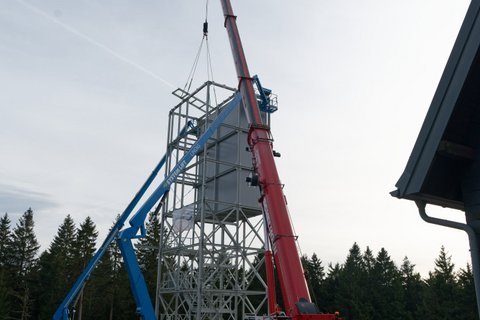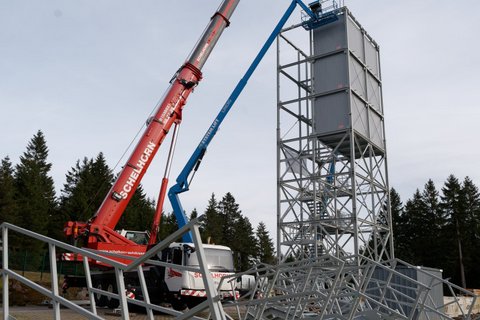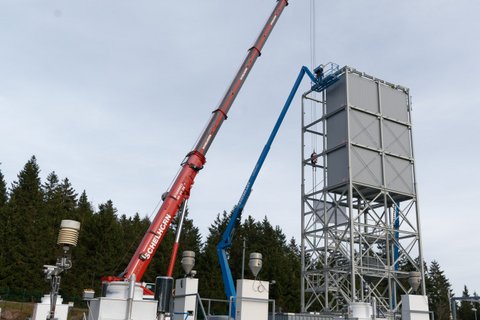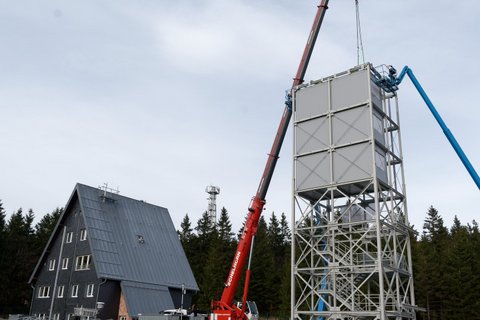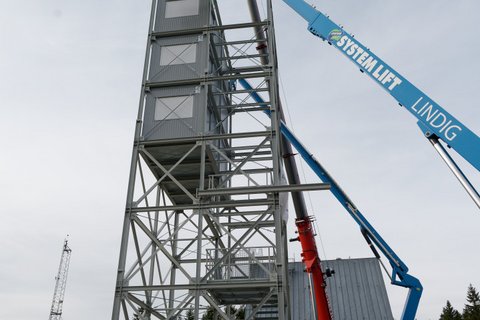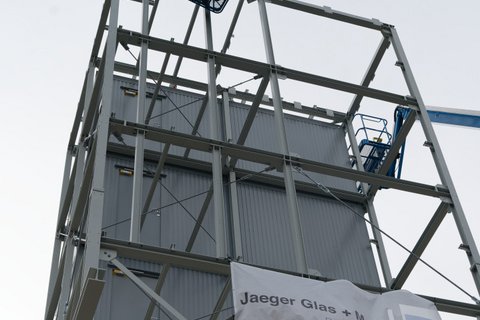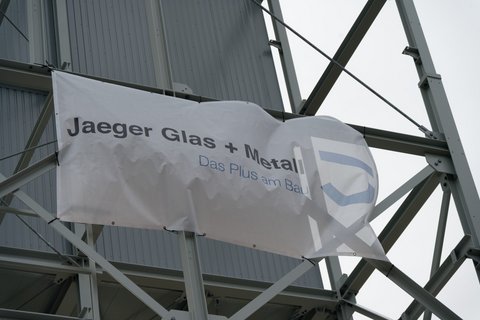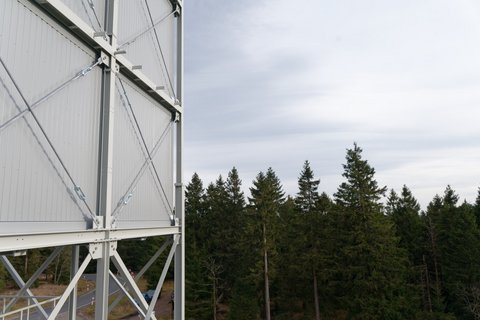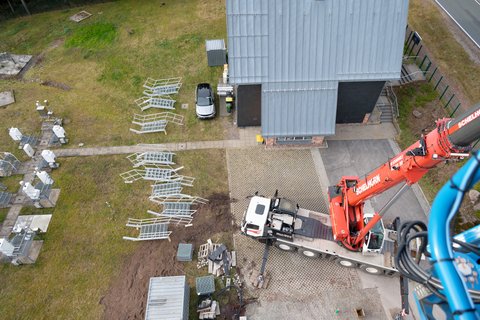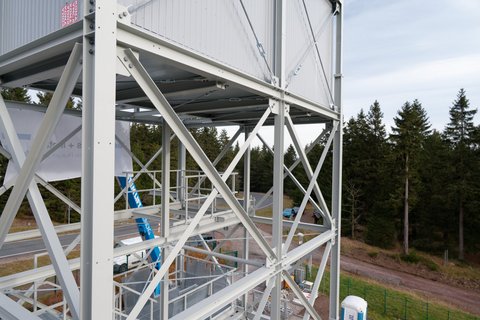SCO: Schmücke's new landmark has reached its final height
Suhl, 13.11.2025 – Uwe Käfer/ Dominik van Pinxteren/ Tilo Arnhold
Shell construction completed before the onset of winter
Suhl. With the installation of three containers, the new tower on the Schmücke has now reached its final height of around 20 metres. Specialists from Zella-Mehlis lifted the containers into the lattice tower from above using a crane in mid-November. In the coming weeks, the agate and telegray steel structure will be fitted with ice fall nets and bird protection. The interior work and installation of the measurement technology in and on the containers will follow over the winter, so that the facility can be expected to go into operation in 2026.
The tower forms the core of the new cloud observatory, which the Leibniz Institute for Tropospheric Research (TROPOS) is currently having built next to the weather station of the German Weather Service (DWD) and the Schmücke air measurement station of the Federal Environment Agency (UBA). It is about as high as the weather station building on the Schmücke. The new tower has a base area of 6.5 x 5.5 metres and will in future provide detailed data on the clouds on the ridge of the Thuringian Forest. To this end, special equipment will be used to analyse cloud particles and cloud water at a height of around 20 metres in real time. These three air-conditioned containers were installed to house the complex electronics. They are the core of the facility and will provide data from the ridge of the Thuringian Forest, which will be compared with two valley stations in Goldlauter and Gehlberg below the Schmücke. The station in Gehlberg is already in operation. The station in Goldlauter will be installed in early 2026, when road construction work there is completed and transport of the containers via the only access road is possible again.
The Schmücke Cloud Observatory (SCO) will be the only observatory in the world to study changes in clouds and the influence of the forest using three stations (Goldlauter-Schmücke-Gehlberg). To do this, researchers are using the topography of the Thuringian Forest, where clouds form relatively frequently when the wind blows over the ridge from the south-west. The summit of the Schmücke (937 m above sea level), which is covered by ground-level clouds on around 200 days per year, therefore offers ideal conditions for stationary cloud measurements.
The observatory is part of the European research infrastructure ACTRIS for the analysis of short-lived climate drivers such as aerosols, clouds and trace gases. The aim is to investigate the physical and chemical interactions between particles and clouds on a long-term and continuous basis in order to observe long-term trends in air quality and climate change. It is funded by the Federal Ministry of Education and Research (BMFTR) as part of the ‘Research for Sustainability’ (FONA) strategy.
Link:
The Schmücke Cloud Observatory (SCO)
https://www.tropos.de/en/research/projects-infrastructures-technology/coordinated-observations-and-networks/sco

